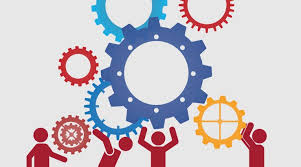
Scenario Perspective
South Africa has been plunged into an energy crisis, which, according to Anton Eberhard of the National Planning Commission is the worst in 40 years. Outages have been commonplace despite peak power demand falling below 2007 levels and actual electricity use far below forecasts.
State-owned power utility Eskom is in very real danger of a ratings downgrade, with the energy system on a knife-edge.
Experts say, serious and urgent action is needed, particularly on the gas master plan, adding that the economics of the new Mozambique gas pipeline needed to be explored, as well as deep offshore drilling.
According to the NPC, the contribution of renewable energy was very important, particularly as solar prices had fallen 68% within the last three years, with a 42% drop in the price of wind energy.
Economists at Eskom say the prospect of nuclear power currently appeared far more debatable, particularly if demand for electricity in the long run was lower owing to slower economic growth
There is also concern that government’s renewable energy programme has not been properly institutionalized.
Eskom says it will continue to draw on its expensive diesel-fuelled open cycle gas turbines in the Western Cape, as the economic cost of load shedding is “ten times” that of the cost of producing power at the facilities.
Asset Optimization planning
Energy, both electrical and thermal, constitutes one of the largest operating expenses in any industry. Energy management thus represents a strategic area for cost reduction within companies, and Maria van Hoeven, Executive Director of the International Energy Agency, has highlighted that the “key to adapting to higher energy prices…will be efficiency”. Energy-intensive companies are beginning to confront the rising need to alter their energy management strategies.
Many companies have begun increasing investment in energy efficiency programmes and are focusing on long-term energy requirement planning. However, there is a growing deficit in the pool of specialist skills required to properly address these issues.
Cost Optimization
The implementation of new technologies such as smart grids could reduce costs and enhance the efficiency of distribution systems. Information and communications technology appears to be playing an ever-increasing role in smart service development. Similarly to electricity, the price of water needs to be cost reflective. Utilities and service providers need to price services such that revenues can cover operation and maintenance – and profit can be re-invested in expansion and rehabilitation of infrastructure.
Outlook
Africa is in a unique position: as the required power generation capacity additions come online, the continent is poised to take advantage of the numerous and bountiful new gas finds and recent progress and cost reductions in renewable energy technologies, to leap frog the development path already taken by industrialised countries and move directly to a renewable-gas hybrid system. This will ensure a rapid, cost competitive, clean and sustainable development pathway for the power sector, able to support economic growth and foster social development



 A subtle dynamic that returns again and again in business is the area of critical momentum.
A subtle dynamic that returns again and again in business is the area of critical momentum.
